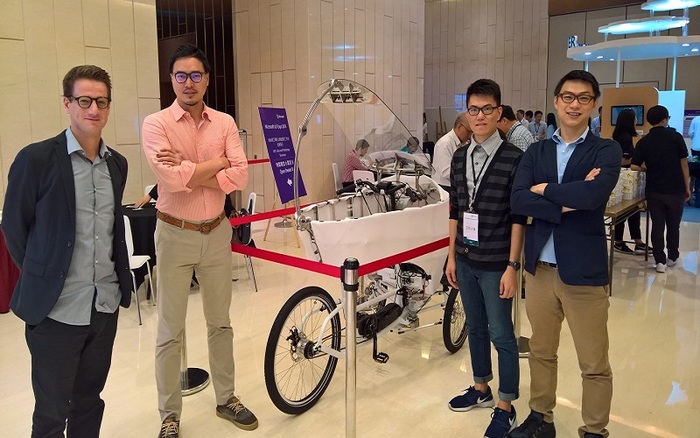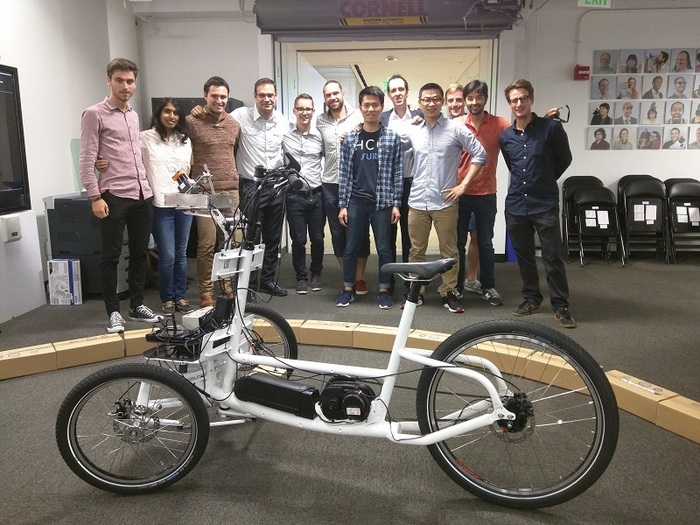Chang-Chi Zhang from the Department of Electronic Engineering joint hand with MIT on autopilot PEV R&D
Chang-Chi Zhang from the Department of Electrical Engineering joint hand with MIT on autopilot PEV R&D
Chang-Chi Zhang from the Department of Electrical Engineering joint hand with MIT on autopilot PEV R&D
Chang-Chi Zhang from the Department of Electrical Engineering joint hand with MIT on autopilot PEV R&D
Chang-Chi Zhang from the Department of Electrical Engineering joint hand with MIT on autopilot PEV R&D
The first autopilot plug-in electric vehicle (PEV) developed by MIT Media Lab was displayed at the 2016 Microsoft IoT Expo on Oct 17. In the future, people can expect to use APP to reserve one of these eco-friendly vehicles at a nearby spot to travel in the city. To increase convince, passengers can even use smart card for current Metro system to pay for car rental rate.
Two of the MIT research team members are current students at Taipei Tech, i.e. Hong-Yi Liang from the Master Program of Computer Science and Information Engineering and Chang-Chi Zhang from the Department of Electrical Engineering.
Liang and Zhang worked in the same project about unmanned vehicles
Chang-Chi Zhang noted that PEV uses AI, camera, and Lidar to analyze surrounding image and detect distance. It also uploads these data to cloud and calculates the best path according to traffic. Speaking of this trip to MIT, he said this is his very first time traveling aboard. With MIT research team, he participated in an unexpected exhibition in Andorra. On the opening press conference, they couldn’t turn on the PEV in the beginning but fortunately clear this malfunction in a short period of time.
After three months staying in the United States, Zhang learned to communicate with people from different field and culture. MIT has rich practice courses and focuses on cross-disciplinary integration. He thinks those features are something that Taiwan vocational education could learn from. Furthermore, he had the opportunity to learn latest techniques and sharpen his language skill.



